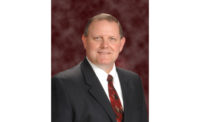Editor’s Note: Every successful project starts with a framework. A vision statement. A blueprint.
The editors of Engineered Systems are proud to present The Blueprint — a Q&A interview with HVACR engineering’s leading voices. These one-on-one discussions will examine the trade’s history, current industry trends, and the factors shaping the sector’s future.
Bell & Gossett, a Xylem brand, is a manufacturer of pumps, valves, heat exchangers, and accessories for plumbing, wastewater, and HVAC — including steam and heat transfer — applications. In addition to an impressive inventory of products and equipment, Bell & Gossett is also recognized for its training and education offerings. The manufacturer boasts a wide-reaching video library, a plethora of e-learning tools, its Little Red Schoolhouse, and more.
Recently, Kyle DelPiano, business development manager - CBS market at Xylem Inc., sat down with Engineered Systems editor-in-chief, Herb Woerpel, to discuss the company’s latest releases, industry trends, the future of water-based systems in the comfort arena, and more.
Engineered Systems: Introduce those reading this article to Bell & Gossett. What type of commercial equipment/technologies do you manufacture?
DelPiano: Since its founding in 1916, innovation and entrepreneurial spirit set the course for Bell & Gossett to become one of the world’s leading manufacturers of pumps, valves, heat exchangers, and accessories for plumbing, wastewater, and HVAC applications. As part of Xylem, Bell & Gossett products can be found in high-profile facilities around the U.S., where innovation and efficiency are highly prized, including the Wilshire Grand Center in Los Angeles and the U.S. Bank Stadium in Minneapolis.
In recent years, Bell & Gossett has focused on revamping its pump line for the highest efficiencies. In 2017, the company became the first pump manufacturer to be fully compliant with the U.S. Department of Energy (DOE) pump efficiency regulations – three years in advance of the 2020 compliance date.
Today, Bell & Gossett continues to lead the industry in providing smart solutions for modern-day challenges facing its customers through both product innovation and deep technological expertise. Increasing the overall efficiency of commercial buildings is a top priority for facility owners, architects, and engineers in order to achieve sustainability goals and reduce costs, and Bell & Gossett’s current portfolio of award-winning and industry-leading products are designed to optimize performance across a variety of applications.
Engineered Systems: What is your role with B&G?
DelPiano: In my role as business development manager, I work closely with customers, our representatives, and senior management to understand market trends and work with our broader team to develop new products and solutions to meet our customers’ ever-changing needs. I’m looking three to five years down the road, evaluating the impact trends will have on the business and the industry.
Engineered Systems: At 36 years old, you’re a rather young man. What attracted you to the HVACR industry?
DelPiano: I graduated from Auburn University in 2007 with a bachelor’s degree in polymer and fiber engineering with a concentration in mechanics and joined Xylem in 2014 in a sales role. That experience, and my prior sales experience, is proving to be an asset in my marketing role. The HVAC world got me into dealing with buildings and cities and having conversations with people about how they can keep their buildings running effectively. I enjoy consultative selling and solving problems. It’s the best of both worlds.
Engineered Systems: B&G is constantly releasing new equipment. One such product is the Series e-HSC double suction pump. Can you tell us a little bit more about this unit?
DelPiano: The e-HSC is the next evolution of Bell & Gossett’s “e” Series pumps. It simplifies B&G’s double suction pump portfolio and provides greater system optimization to improve efficiency and increase energy savings. There are 90 model options with extensive flow/head coverage for a wide variety of HVAC system requirements. The wide range of sizes allows customers to get the right size pump, and its configuration means there is a smaller footprint to save space in the mechanical room while being easy to install and service.
Engineered Systems: What applications is the e-HSC best suited for?
DelPiano: The Series e-HSC is extremely versatile, designed for large capacity, high-head systems with high inlet pressure, which is a common challenge in commercial HVAC systems. It’s suitable for commercial buildings, such as hospitals, hotels and resorts, sports arenas, office buildings, and airports.
Engineered Systems: ESP-Systemwize launched about two years ago. Define its value to the industry?
DelPiano: ESP-Systemwize is an online selection tool for HVAC and plumbing system designers that allows them to choose all the components of a system in one integrated tool. It evolved out of our old selection program, ESP-Plus Online, and it’s proven to be an extremely valuable tool for engineers. It helps them streamline the selection process because they have the ability to make side-by-side comparisons to choose the right pump for the system, among other things. Since we launched it in 2017, we’ve made a number of updates — and we will continue to do that as the technology and the industry changes. For example, with the DOE pump efficiency standards going into effect in 2020, we’ve added pump energy index (PEI) information. Bell & Gossett’s PLEV selection criteria, which stands for part-load efficiency value, and is a calculation that represents the efficiency of the pump at partial flow rates, is another feature of the tool that helps engineers design efficient hydronic systems.
Engineered Systems: While VRF gets a lot of the headlines, I know B&G feels very strongly that hydronics is an attractive option as well. So, let’s be frank: which technology — VRF or hydronics — is the most energy efficient?
DelPiano: Both hydronics and VRF have a place in commercial building HVAC systems. It really comes down to which system is right for a particular building, so system designers have to do their due diligence to make that determination. By looking at key factors such as safety, compliance, serviceability, and life cycle costs, engineers can methodically determine which system accomplishes a project’s goals. System designers should be aware that VRF efficiency claims are coming under scrutiny by utilities and the DOE, prompting a DOE review of test procedures and energy conservation standards for VRF systems.
Recent testing of installed VRF systems revealed energy savings well below the stated efficiency ratings from manufacturers. This discovery calls into question whether currently accepted test methods under AHRI 1230 yield materially inaccurate or unrepresentative energy use data. Field tests performed by one major utility company in 2108 found that efficiency results were between 40-50% lower than VRF manufacturers claim. Overstating energy efficiencies makes it difficult for consumers to make reliable system purchase decisions and does not provide the relief to the energy grid that utilities depend on.
Xylem recently commissioned a life cycle cost analysis study that evaluated HVAC systems in seven South Carolina school buildings, hydronics-based systems and VRF systems were both represented. The results are pretty eye opening.
Engineered Systems: In the May issue of Engineered Systems, we ran an article that, very bluntly, carried a headline that read: The Future of Comfort Depends on Less Water-Intensive Equipment. Is this statement true or false?
DelPiano: Water conservation is important, especially in water-scarce areas like Arizona, California, and Texas. That’s driving smarter use and reuse of water, such as capturing rainwater and processing it for potable water or directing it to HVAC systems or graywater systems that reuse water that goes down the drain. But water-based systems aren’t going anywhere anytime soon; there is always going to be a need for hydronics in HVAC systems. Industry and regulatory changes will continue to influence how we go about designing and constructing buildings and systems. For example, the decarbonization trend that has begun in California and New York to reduce emissions that produce climate pollution de-emphasizes fossil fuels and promotes expansion of electricification technologies. That affects gas-fired boilers in HVAC systems in large commercial buildings. Do gas boilers now become electric boilers? Is everything that was powered by natural gas now going to be electric? Can the grid handle it? Will we see more solar- and wind-powered technologies to produce electricity? There is a ripple effect that will affect all aspects of building and system design.
Engineered Systems: What’s one major trend occurring in the hydronics sector that will shake the industry’s foundation?
DelPiano: Emerging technologies will continue to affect how we design hydronics systems. Of course, the Internet of Things (IOT) is influencing product and offering design and delivery as the demand increases for smarter, connected equipment.
Besides IOT, one of the things we’re seeing is the integration of augmented and virtual reality (AR and VR) in building design, which is influencing how HVAC and plumbing system designers work. For example, through VR, you can walk through the mechanical room and really understand the footprint, the piping layout, etc., and determine if the pump you selected is the right pump for the job. If you can select a smaller pump, then you can save the customer upfront costs. Building information modeling (BIM) is helping HVAC and plumbing system designers hone in on their designs to improve functionality and efficiency.





